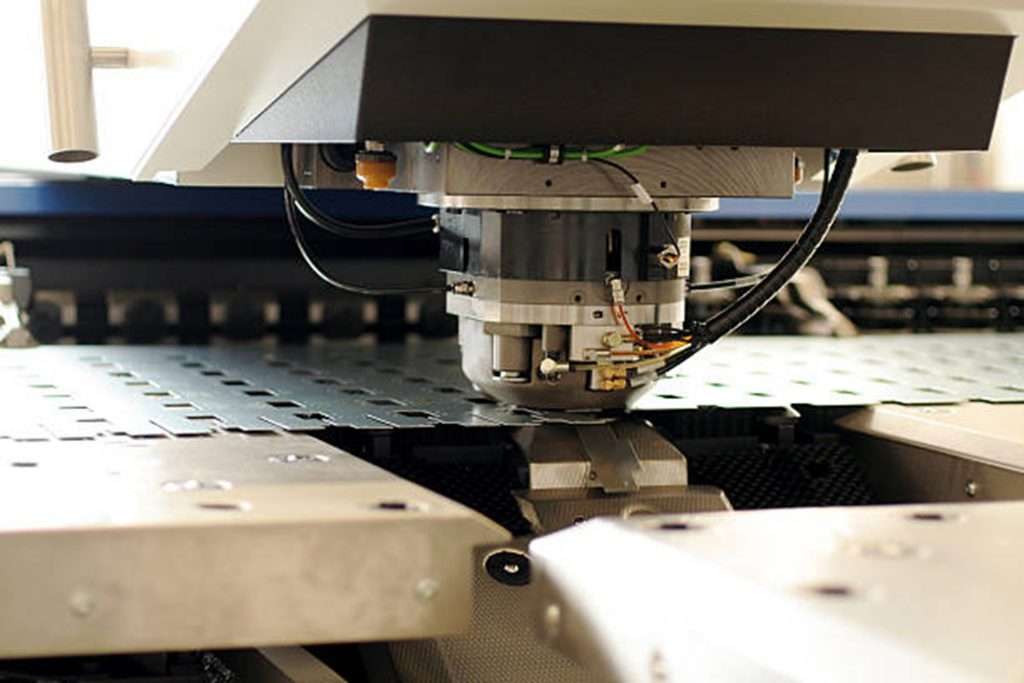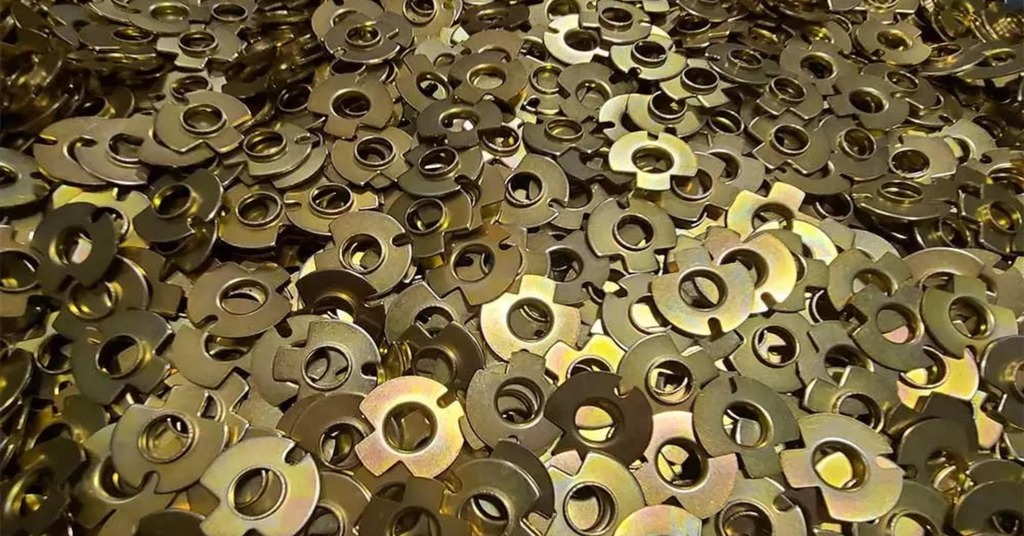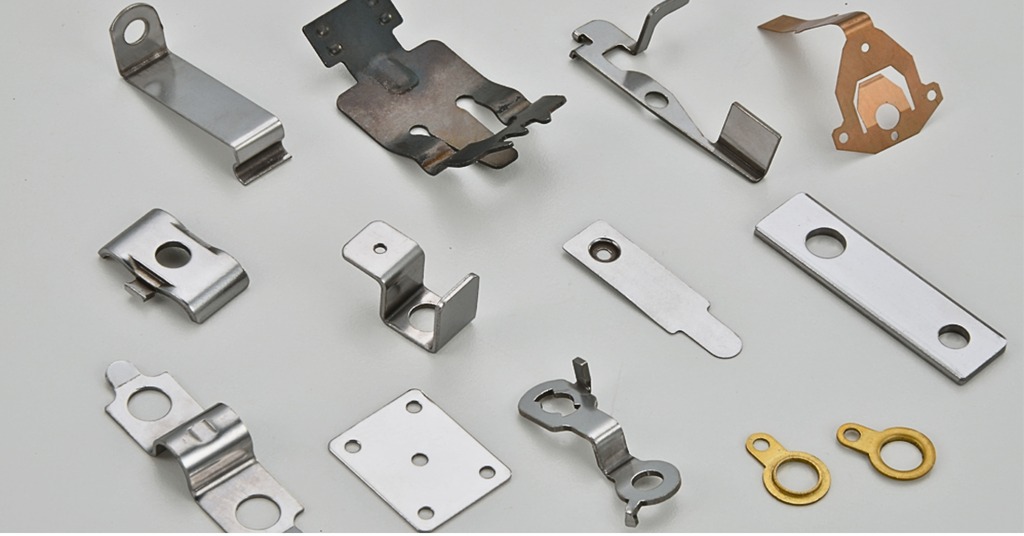“Metal stamping offers remarkable efficiency in part creation, yet navigating its cost structure presents various challenges. Discover intricacies of optimizing your metal stamping projects to integrate cost-effectiveness with precision seamlessly.“

In Sheet Metal Fabrication, Metal Stamping stands out as a fascinating technique that shapes metal sheets into desired configurations. Metal stamping has become a highly adaptable and effective manufacturing process that creates precisely formed and intricate parts from flat metal sheets or coils by applying force, pressure, and specialized tools.
Familiarity with metal stamping costs guides the manufacturer in managing and controlling the associated expenses. This article will focus on the cost estimation parameters of custom metal stamping.
What is Metal Stamping?
The Metal stamping process enables the creation of components with diverse shapes, including bends, curves, cutouts, and embossing. Furthermore, it maintains consistent quality, dimensional accuracy, and repeatability across short and long production runs, all while minimizing costs and lead times.
Creating a leading product involves numerous considerations, including selecting the right technique, managing design complexity, ensuring material suitability, and meeting required tolerances. For manufacturers, especially those dealing with high volumes, the question often arises: ‘How much does metal stamping cost?’ The answer, however, is not one size fits all.

The metal stamping process
The final price of metal stamping is influenced by several factors, such as the initial cost of creating the tools (dies) used for shaping the metal, the type of metal itself, the complexity of the part design, production volume, and any quality control or documentation requirements. These elements collectively determine the cost per piece.
Try Prolean Now!
Factors Influencing Metal Stamping Costs
Metal stamping costs encompass a variety of factors beyond just the raw material price. While the initial cost of the sheet metal plays a role, several other key variables impact the final price tag.
Here’s a breakdown of the key considerations:
1. Stamping Material
As metal stamping is a subtractive manufacturing process, selecting the right material for metal stamping needs several crucial factors. Material properties like formability and corrosion resistance are paramount, as they directly impact the ease of shaping and long-term durability of the stamped components. Additionally, the thickness of the material plays a significant role, affecting the stamping process’s force requirements and tooling complexity.
Moreover, It’s essential to explore stock options to minimize costs, prioritize common steel grades for affordability and availability, and utilize steel warehouses for smaller projects to avoid minimum order requirements. For corrosion-prone applications, thoughtful consideration of protective measures or alternative materials like aluminum is necessary. Consulting with engineers adds invaluable expertise, guiding towards optimal material choices and cost-effective strategies.
2. Part Complexity
Part complexity significantly impacts metal stamping costs. Simple designs with fewer bends and features require less intricate tooling, typically single-station dies, resulting in lower manufacturing and maintenance costs per part.
Conversely, parts with intricate features like sharp angles, deep draws, or tight tolerances require progressive dies with multiple forming stages, which are more complex and expensive to design and build, leading to higher costs per part.
3. Initial Tooling Costs
Dies, essential tools in metal stamping, significantly impact project costs. Simple parts with few bends often require a single-station die, a one-step tool that is cost-effective to design and build.
In contrast, complex parts with deep draws or tight tolerances demand progressive dies. These multi-stage tools shape the part gradually, increasing both complexity and cost.
Additionally, the choice of die material is crucial; while high-speed steel provides durability for high-volume production, it comes at a premium compared to tool steel, which is more suitable for lower-volume production.
4. Production Volume
Metal stamping excels in high-volume production, where economies of scale lead to significant cost reductions per unit. This advantage arises from spreading the initial tooling investment across a larger number of parts.

High Volume Metal Stamping
In essence, as production volume increases, the cost per unit decreases, making metal stamping an exceptionally cost-effective solution for large-scale manufacturing projects.
5. Post Processing Operations
Post-processing steps can impact metal stamping costs beyond the core stamping process. These steps include shearing to cut parts from a larger sheet, trimming to remove excess material around the edges, and deburring to smooth out rough surfaces left from the stamping process.
While some parts may require minimal post-processing, those with complex geometries or tight tolerances might need several additional steps. This can substantially increase the overall cost per unit.
6. Finishing Requirements
The final surface finish desired for your metal component influences metal stamping costs. Parts requiring a smooth, polished finish may require additional processes such as electroplating or painting, which contribute to the overall cost.
Conversely, parts where a raw metal finish is acceptable may incur minimal finishing costs. Therefore, during the design and planning phase, carefully considering the desired final appearance and its impact on cost is crucial for making informed decisions.

Is there any Alternative to Metal Stamping?
Ultimately, the best choice depends on the specific requirements of your project. Beyond metal stamping, sheet metal fabrication offers a range of options to suit diverse project needs. Machining ensures precision for intricate designs, while laser cutting and water jet cutting provides flexibility and accuracy for complex shapes.
Additionally, metal injection molding excels in producing high-volume complex parts, while sheet metal forming offers cost-effective solutions for simpler shapes. Although 3D printing offers complex geometries, considerations regarding speed and cost remain.
Which Materials are Best for Metal Stamping?
Metal stamping offers versatility across a range of materials, with some of the most common options including:
- Steel: Widely favored for its affordability, strength, and diverse range of alloys.
- Aluminum: Offers lightweight properties, excellent formability, and corrosion resistance.
- Stainless Steel: Known for its exceptional corrosion resistance and strength, ideal for demanding applications.
- Brass and Copper: Valued for their good formability, electrical conductivity, and corrosion resistance.
- Nickel Alloys: Reserved for high-strength, temperature-resistant, and corrosion-resistant applications, albeit at a higher cost.
The stamping materials choice depends on various factors, for instance, desired properties, part complexity, and production volume.
Try Prolean Now!
Choose Pro-lean For Precise yet Affordable Metal Stamping Parts
Prolean is a leading provider of comprehensive metal stamping service, offering a range of solutions directed to your needs:
- Design for Manufacturability (DFM) Analysis: Our engineers will analyze your design and suggest optimizations to reduce metal stamping costs.
- Tooling Design and Fabrication: Utilizing cutting-edge technology, we design and build high-quality, durable tools customized to your specifications.
- High-Volume Production: With state-of-the-art stamping presses and experienced personnel, we ensure efficient and cost-effective production of your metal components.
- Quality Control: We uphold rigorous quality control procedures throughout the process, ensuring that parts meet your specifications.
At Prolean, we recognize the importance of cost optimization in metal stamping projects. We collaborate closely with you to identify cost-saving opportunities across the design, tooling, and production phases.
Send us your design today and get an instant quote!
ًRead More:
- Costs of Custom Medical Machining Prototypes
- What are the Metal Extrusion Applications?
- Swiss Turning vs CNC Turning: Key Differences
- Precision CNC Medical Machining for the Healthcare Industry
- Custom Aerospace Parts Manufacturing: A Complete Guide
- Cost of Prototyping Machine Parts: Estimate Your Budget
- Factors Influencing the Cost of Rapid Prototyping
- Hole Drilling EDM: Definition & Applications
Summing Up
Metal stamping offers undeniable advantages for high-volume production, yet understanding its cost structure can be intricate. The choice of metal, part complexity, and required tooling significantly impact the final cost.
Moreover, production volume plays a crucial role, spreading the initial tooling investment across more parts in high-volume scenarios, thus reducing the cost per unit significantly. Additionally, consider the potential cost implications of post-processing operations like trimming or deburring, as well as the desired final surface finish of your components.
By carefully weighing these factors throughout your project, you can make informed decisions that prioritize cost-effectiveness without compromising quality. Seeking guidance from professionals can further assist in navigating the cost structure effectively and achieving optimal results for your specific needs.
FAQs
Q1- What are the file formats suitable for metal stamping projects?
Certain CAD (Computer-aided Design) file formats, including CATIA, STEP, IGES, and DXF can be used in metal stamping.
Q:2. What is the difference between short-run and long-run metal stamping costs?
Cost evaluation in metal stamping often considers two production scenarios:
Short-run: Typically for smaller orders (under 10,000 pieces). Tooling costs have a significant impact due to the lower volume, leading to higher per-unit costs.
Long-run: Involves larger orders (over 10,000 pieces). Tooling costs are spread across a larger volume, reducing per-unit costs. However, initial investment in sound tooling may be higher to accommodate higher production volumes.
Resource
Johny Chen (2021): Complete and detailed handbook of custom metal stamping – The ultimate guide to metal stamping : https://www.micpressed.com/metal-stamping-overview/




0 Comments